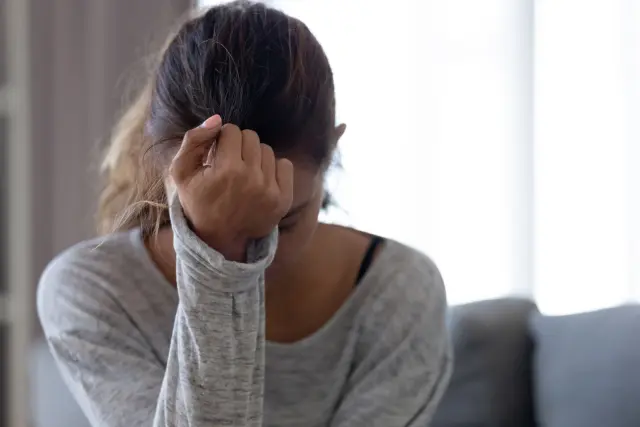
In today’s fast-paced world, many people struggle with mental health issues without seeking professional help. This article reveals four secret barriers that prevent us from walking through the doors of therapy. By uncovering hidden stigmas and fears, we provide eye-opening insights into why therapy is often avoided, even when it could be life-changing. Whether you’re looking to understand the psychological hurdles or reflect on your own hesitations, this article combines current data and relatable examples from 2023 to guide you toward a path of healing and self-improvement.
Understanding the Stigma and Misconceptions Surrounding Therapy
Therapy is too often viewed through a lens of stigma and misconception, which makes many people hesitate before seeking professional help. The outdated idea that asking for therapy is a sign of weakness continues to persist, despite scientific research proving otherwise. In fact, therapy is a powerful tool that fosters self-understanding and helps build effective coping strategies. Breaking the stigma is key to normalizing help-seeking behavior and boosting mental resilience.
Historically, mental health has been considered a taboo subject in several cultures, leading to misunderstandings or even ridicule. Media portrayals frequently exaggerate the process, reinforcing these old-fashioned beliefs. By raising awareness and providing accurate information on the benefits of mental health support, we can change these perceptions. It’s important to see therapy not as a weakness, but as a resource for growth and positive transformation.
Community outreach programs and educational campaigns have already shown success in reducing stigma by sharing personal recovery stories and expert advice. When people witness real-life transformations and hear narratives of hope, they become more open to the idea of therapy. Clearly, misinformation fuels misconceptions; therefore, providing accessible and accurate resources is crucial. Embracing true knowledge over myths can open the door to universal acceptance of mental health treatments.
Fear of Vulnerability: The Emotional Cost of Seeking Help

Opening up to a stranger about your deepest thoughts can be extremely daunting. The fear of vulnerability is a major emotional barrier that stops many from seeking therapy. This worry is tied to the fear of losing control, exposing personal weaknesses, or being judged. Recognizing vulnerability as a strength can shift our perspective towards self-care and personal growth. Emotional courage is essential to overcome this inner resistance.
In a therapeutic setting, sharing painful memories or personal experiences can initially feel overwhelming. This is worsened by cultural expectations that equate emotional restraint with strength. Many fear that admitting vulnerability might lead to pity or unwanted sympathy, which can reinforce their sense of isolation. Such concerns often keep people from addressing deep-seated emotional issues.
However, research shows that therapy not only increases self-awareness but also enhances empathy towards oneself. Sharing in a safe environment proves that vulnerability is transformative rather than harmful. Programs like group therapy and guided introspection help individuals gradually build trust and reduce the fear of opening up.
Cultural and Social Barriers: Prejudices That Hinder Mental Health Care
Cultural differences play a powerful role in shaping the way people perceive and access therapy. In many communities, long-held beliefs and cultural norms create significant barriers to mental health support. These prejudices, often passed down through generations, lead to a dismissive attitude toward the therapeutic process. Understanding cultural barriers is essential to bridging the gap in mental health care.

Social expectations and community narratives often pressure individuals to conform to traditional roles. For example, the stereotype that men must always be stoic or that women should remain caretakers discourages many from expressing emotional distress. This reluctance only reinforces harmful stereotypes about mental health. Increasing public dialogue in schools, workplaces, and community centers is the first step toward change.
Social prejudices not only affect personal choices but also impact public policy regarding mental health resources. Advocacy groups and supportive networks are working hard to challenge these outdated perspectives. Their efforts are creating more inclusive narratives around therapy, showing that breaking cultural barriers requires collective commitment and courage.
Practical Obstacles: Financial and Logistical Challenges in Therapy
Even after overcoming emotional and social hurdles, practical issues can still block access to therapy. Financial constraints, limited availability of professionals, and geographical factors all contribute to making mental health services hard to reach. Financial and logistical challenges significantly contribute to the underuse of mental health resources.

The high cost of therapy can be a major barrier, especially in regions with limited insurance coverage. Busy work schedules, family responsibilities, and transportation issues further complicate regular access to therapy. These everyday challenges force many to delay or forego the help they truly need.
In response, innovative solutions are emerging. Teletherapy, sliding scale fees, and community-based mental health programs are breaking down these obstacles. These strategies show that with creativity and community support, even the most daunting logistical challenges can be overcome. Accessibility matters and ensuring broad access to therapy is a critical step toward improving public health.
Future Directions and How to Overcome These Barriers
Looking into the future, it is essential to create a world where seeking mental well-being is free from stigma, fear, and practical constraints. Each barrier discussed in this article serves as a call to action for individuals, communities, and policymakers alike. Through education, advocacy, and innovation, we can dismantle these obstacles. Confronting these barriers is not just a personal mission but a step toward a more compassionate society.
One promising step is incorporating mental health education into school curricula, workplace training, and public health campaigns. Early intervention and continuous support can transform attitudes toward mental health. A collaborative effort among mental health professionals, educators, and community leaders is vital to building a more understanding and empathetic society.
Additionally, advances in technology and telemedicine are set to reduce logistical challenges further, expanding access to therapy like never before. By continuing to innovate and address economic disparities, we can move closer to achieving universal mental health care. The future of therapy depends on our collective determination to challenge the status quo and establish supportive systems for all.
Content Added: Deep Dive into Additional Barriers and Solutions
Beyond the main challenges previously discussed, several nuanced factors also contribute to the reluctance to seek therapy. Many individuals battle internalized shame that prevents them from admitting they need help. This internal conflict is especially common in cultures that prize self-reliance so highly that asking for assistance is seen as a personal failure.

Moreover, in the digital age, the paradox of abundant mental health resources mixed with widespread misinformation further complicates the issue. Misleading advice from non-experts on social media can discourage people from seeking professional support. Differentiating between credible mental health information and oversimplified trends is essential.
In terms of solutions, emerging approaches like peer-to-peer support groups and community mental health workshops are gaining traction. These forums provide safe spaces for individuals to share experiences and support each other, complementing traditional therapy. By blending modern technology with compassionate community efforts, we can create robust support networks. Leveraging modern resources helps close the gap between need and access, ensuring everyone has the opportunity to heal.
The journey toward mental well-being is often obstructed by deep-seated barriers in our personal and social lives. By understanding issues like stigma, fear of vulnerability, cultural prejudices, and practical challenges such as finances, we can start to dismantle these obstacles. Awareness is the first step to change; by taking action, we pave the way to healthier and happier lives. Although the road to therapy may seem challenging at first, overcoming these hurdles is an essential investment in our future well-being.




